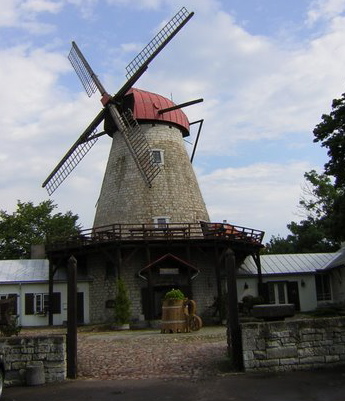
| IMRAM 2007 - étape 3 |
|
Lulea - Ratan (26-27/7) The end of the trip for most youngsters on board, replaced only by the author of these lines. Appointment was given "near the ice-breakers". Lulea is one of the place where Swedish ice-breakers are stationed over the summer. The Atle, Frej and Ymer were easily visible from the plane, awaiting the next winter with serious ice conditions, if any ... It was Lisa's birthday. Since the final episode of Harry Potter had been published just a day earlier, I more or less expected she would want a copy, but no, she had asked for a ... Reblochon cheese. I duely obliged and was treated to the scene of seeing a Reblochon as well as nearly a kilogram of Jura cheese vanish in little more than 15 mins. I later understood why: she had spent a month in Sweden and Finland, countries where excellent berries and fish abound, but where cheese worthy of the name is apparently a rare commodity. Peter had spent the day repainting the cockpit floor. It looked superb, even if for a couple of days we would have to fly above the floor while hoisting the sails. All in vain, as we were to discovered a few days later: the paint refused to stick, someting several other users of the same paint had painfully discovered. Refueling exercise, dinner and departure in the evening for Ratan under peaceful conditions. Ratan is a former customs post for the Bottenviken (Bay of Bothnia): ships were unloaded, the load taxed and the the ships were reloaded with their timber, iron etc..., an exercise which at the time delighted the crews as much as it would today. Some remainders of the infrastructure are still to be seen on the island, including on the positive side, abundant blueberries and some mazes which were either made by the crews of passing cargo ships to kill the waiting time at the customs, or by local fishermen in effort to improve their luck. On the mainland, there are monuments to 2 soldiers out of several 1000 who where wounded or killed here and in Sävar in the battle of Aug 1809 between Sweden and Russia. At Sävar, Sweden had lost a battle against Russia, but a day later in Ratan, Sweden was more lucky. In the aftermath, Sweden lost what is now Finland, but as a result of the battle of Ratan, the border was considerably further to the North, leaving an area to Sweden that would later prove rich in mineral resources. Ratan - Ulvön (29-30/7) The menu of the day was the passage of the Quark, the string of islands which separates the Bay of Bothnia from the Sea of Bothnia. We had delayed our departure by a day to have the time to visit, but also to await more settled weather. When we got underway, there still was a fresh breeze, on average 6 Bf, and needless to say that the wind was exactly aligned with the passage. The result was an impressive number of tacks, mostly in 2nd reef and thus with 120° tacking angles. Peter at some point observed with wry smiles that the VMG was barely reaching 2 knots, inspite of a boat speed regularly exceeding 7 knots! After the Quark, we could set course to Ulvön without need for further tacks, and by the end of the day we had done 125 nm to cover the net distance of 85 nm between Ratan and Ulvön. Ulvön is actually 2 islands, separated by a narrow and well sheltered passage, with a peaceful village and a swimming pool. Good occasion to pratice mooring with a bow-anchor, a fairly common technique in this region (an also in the Mediterranean), but all harbours we were to visit later had in fact buoys. Ulvön - Härnösand (30/7) We had experienced serious problems finding crew to sail from Lulea to Helsinki, but at last moment Yvonne found Gunnar, the grandfather of her godson, willing to join, which saved the 2007 tour. One wonders what makes the Baltic so little popular. Later on we were to meet a few groups from countries that do not border the Baltic: two Swiss, several Brits and one French, but their numbers really do no justice to this remarkable sailing region. In addition, the welcome one receives here can simply not be compared with the Mediterranean. At any rate, whe we arrived in the harbour of Härnösand, Gunnar was already there waiting for us! Härnösand - Söderhamn (31/7) With an average speed of 7.4 knots, one of the faster legs in Imram history: constantly at a reach in winds of 6-7 Bf, the boat speed regularly exceeded 10 knots, and consistently in the correct direction. Not exactly a quiet leg to get acquainted with the boat, but Gunnar was more surprised that the youngsters on board weren't in the least impressed ... * * *
<< Eape précédente | Home | Etape suivante / next leg >> The
Imram Voyage 2007 - Integral 12.50 - ACAPELA, oct 2007 |


